The flag is blue blue yellow. Who and why turned the flag of Ukraine

The State Flag is one of the three official state symbols, symbolizing the sovereignty of the state. The State Flag of Ukraine is a flag of two equal horizontal stripes of blue and yellow colors with a ratio of the width of the flag to its length 2: 3.
The Ukrainian national tradition of symbolic representation of the world has been formed over several millennia. The use of yellow and blue colors (with different shades) on the flags of Ukraine-Rus can be traced back to the adoption of Christianity. Subsequently, these two colors acquire the meaning of state.
In the middle of the 17th century, after the Hetmanate was annexed to the Russian state, blue (blue) panels with gold or yellow images of crosses and other signs became widespread. Since the time of the Cossacks, the yellow-blue combination of colors has gradually begun to dominate on Ukrainian banners, flags and kleinods.
After the tradition of Cossack symbols was interrupted, for a long time in Ukraine, which was part of Russian Empire, the question of national symbols was not raised.
The first attempt to create a yellow-blue flag from two horizontal stripes of approximately the same shape as now was made by the Main Russian Rada (the body that represented the national movement of the Ukrainian population of Galicia), which began the struggle for the revival of the Ukrainian nation. In June 1848, the yellow-blue flag was raised for the first time at the Lviv City Hall.
The impetus for the spread of yellow-blue symbols was the February Revolution of 1917 in Russia.
On March 22, 1918, the Central Council adopted the Law on the State Flag of the Republic, approving the yellow-blue flag as the symbol of the Ukrainian People's Republic. November 13, 1918 blue and yellow flag became the state symbol of the West Ukrainian People's Republic. It was approved in Subcarpathian Rus, and in 1939 - in Carpathian Ukraine. In the period 1917 - early 1919. the blue and yellow flag was also used in Ukraine by the Bolsheviks.
The blue-yellow combination of colors finally took shape as a single national at the beginning of the 20th century. The symbols of Ukraine in their newest interpretation are the cloudless sky as a symbol of peace - blue, and ripe wheat fields as a symbol of prosperity - yellow.
In Soviet times, the flag of Ukraine was red with the obligatory sickle, hammer and star and a blue stripe along the lower edge of the flag. The blue stripe symbolized "the color of the banners of Bohdan Khmelnitsky." Although what specific banners were discussed, it is not known.

In the 1990s, the national yellow-blue ("zhovto-blakitny") flag became widespread, first in nationalist circles, and then everywhere. The shade of blue was very light at first. However, officially, the state was in no hurry to change its symbols. By the time of the collapse of the USSR, the Soviet flag remained the state flag of Ukraine. Although, for example, on July 24, 1990, the Presidium of the Kiev City Council of People's Deputies decided to hang out a blue and yellow flag next to the state red and blue flag in front of the city council building on Khreshchatyk. And on September 4, 1991, in Kiev, a blue-yellow flag was raised over the building of the Supreme Soviet (also together with a red-blue one).
Officially, the new state flag of Ukraine was adopted by the resolution of the Verkhovna Rada of January 28, 1992.
In August 2004, then President Leonid Kuchma signed Decree No. 987/2004 establishing the Day of the State Flag of Ukraine, which is celebrated annually on 23 August. Prior to that, National Flag Day was celebrated only in Kiev at the municipal level.
"Sinyo-Zhovty Bikolor" became the official flag of Ukraine in winter 1992. What does the blue-yellow color combination mean, and why is it so wrong for China?
Why is he "blakitno-zhovty"?
At first, the blue-and-yellow cloth caused some discomfort among Ukrainians, especially for sports fans. It so happened that the national colors of independent Ukraine began to coincide with the colors of Sweden. Therefore, watching a biathlon competition, Ukrainian fans faced difficulties in differentiating their athletes from Swedish athletes. And here, after another dose of support was accidentally given to a northern stranger, an emotional question arose: "Why are we like the Swedes?"
Evil tongues say that the cause-and-effect relationship is direct here. Say, "cinho-zhovty bicolor" was granted by the Swedish king Karl XII to hetman Mazepa for the fact that he went over to the Swedish side. But we are not ready to share the version that the current Ukrainian banner is a clone of the Swedish one.
Why is he "zhovto-blakitny"? The answer was given back in 1848 by the Ukrainian poet, writer and ethnographer Yakov Golovatsky: “Blue is like the clear sky of southern Russia. The golden color, like those lightning flashes in the clear sky, depicted a clear light. " And later Pavlo Tychina portrayed this in a more poetic way: "Pyd prapori, pyd sleepy blue."
True, in 1918 everything turned upside down.
Why yellow at the bottom?

Every citizen of Ukraine at least once in his life asked himself the question: “Why was the blue color put on top? It's just as inconvenient. " The current heralds of Ukraine wisely explain that blue is the sky, and yellow is a wheat field. This formula was first discovered and announced in 1918 by Hetman Pavel Skoropadsky. However, in the beginning, everything was different.
In January 1918, a new one appears on the wreckage of the Russian Empire. public education- Ukrainian People's Republic. A month later, the Central Rada, the parliament of the new country, approves the flag - "zhovto-blakitny". In that order - yellow at the top, blue at the bottom. However, in the spring, the power in Ukraine is changing - a new state with the name of the Ukrainian State and the head - Hetman Skoropadsky appears. And the first thing the hetman does is change the flag, just turning it over. So "zhovto-blakitny" turns into "blue-zhovty". Without unnecessary, so to speak, explanations and comments.
What's with the Stadium?
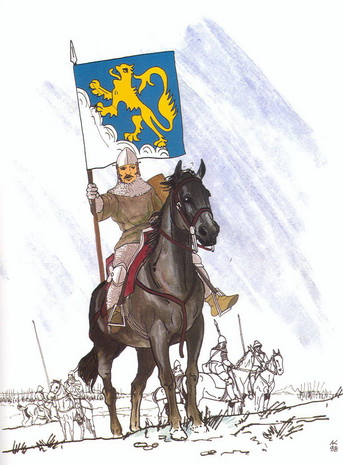
This question can already be asked by more subtle connoisseurs of Ukrainian symbolism. And we are ready to accept the challenge and answer it.
Once Western Ukraine was part of the Austrian Empire and was called Galicia. So, the governor of this land in 1846-1848 was a certain Franz von Warthausen Stadium. The stadium did a lot of good deeds for the Rusyns (in Austria all the Slavic inhabitants of Western Ukraine were called that): for example, it abolished serfdom in Galicia. True, the count was very sad about the fact that the Rusyns think of themselves as part of the general Russian cultural tradition. The stadium decided to take on the mission of a "civilizer" and in 1848 initiated the creation of a body of national self-government for Rusyns - the Golovnaya Russian Rada. Rada needed branding, and then it was decided to consider the lion as the “banner of the Russian land, and yellow and blue as flowers”. They say that historians specially engaged by the count had a hand in this, who found somewhere in the annals that in the famous Battle of Grunwald in 1410 knights representing the Lviv land fought against the Teutons shoulder to shoulder with the Lithuanians and Poles. And they fought precisely with the "lion" banners in yellow-blue colors.
By the way, there is a legend that the first banner of the "Russian land" was embroidered by the mother of the Austrian Emperor Franz Joseph at the personal request of the Stadium.
What's with the silver?
In general, the roots of the combination of yellow and blue tinctures lie in knightly heraldry, where they mean gold and silver. During the Middle Ages, the combination of these "metallic" colors was present everywhere - in particular on knightly combat standards. There were versions where yellow is at the top and where it is at the bottom. According to one of the versions, the standard with the "golden" top was worn by the older brothers, the heirs of the clan, and the silver ones, respectively, by the younger ones. Freud's admirers would probably have seen a certain sign in the leapfrog with the "top" of the banner among the Ukrainians in 1918. But sometimes "a cigar is just a cigar".
Why are the Chinese afraid of the Ukrainian flag?
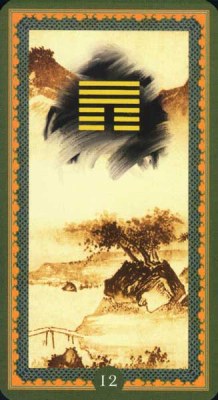
It turned out quite unexpectedly. In 1992, a Chinese artist Mao Mao visited Ukraine, who, seeing the Ukrainian flag, began to beg President Kravchuk to change the colors. It turned out that the combination in which blue dominates over yellow denotes the hexagram pi in the Chinese I Ching system, symbolizing progressive degradation. The dominance of blue (symbolizes will) over yellow (wisdom) expresses the "Law of Decline" among the Chinese. However, the Ukrainian president turned out to be not as superstitious as the Chinese and kept the old combination for his fellow countrymen.
It is curious that the "pi" hexagram is very much reminiscent of the current logo of the city of Perm, created by the designer Artemy Lebedev.
What about Luscher?
Followers of the famous psychologist and color theorist Max Luscher are sure that if a person on tests chooses a combination in which blue is at the top and yellow is below, he subconsciously admits that he strongly depends on the environment and the people around him. If he chooses the opposite combination, this speaks of his ambitions to become self-sufficient, independent.
What were the options?

Ukrainian politicians had many options in choosing the national flag: from the red and black OUN banner to a very strange combination of blue, yellow and lilac, reminiscent of the version of the current standard of gay activists. But the most curious, in our opinion, was the project of the "blue-zhovtoy ensign" with a hammer and sickle, which was considered in 1991 as a draft of the national flag. It seems that the current flag of Ukraine is not the last option. At least someday a "polarity reversal" may occur in the "blue-zhovt" ...
22.08.2013 15:57:27
In 1918, two flags appeared in Ukraine: yellow-blue and inverted blue-yellow. After overthrowing the Central Rada, the Russian monarchist Skoropadsky legalized the inverted flag as a symbol of his revolution. The flags of the OUN-UPA movement were also different, but in the end the blue and yellow were approved - as now, according to the Constitution. How much longer will we carry the inverted flag of Ukraine?
This one - yellow and blue - is our real flag!
Gold, yellow symbolizes the Creator, God the Father and, in general, the Highest Spirituality. Blue is everything earthly, as well as freedom of choice, which the Creator endowed his creations with in the hope that they will not abuse it.
The interpretation of the blue sky and golden fields, adopted now, is not just primitive, it is an attempt at the triumph of Evil.
The creative director of the Educated Ukraine public association Anatoly Mitskan believes that in reality the colors of our flag have long symbolized the two main elements of nature and human existence - fire (yellow) and water (blue). It is logical to assume that only the combination "yellow - above, blue - below" reflects the eternal symmetry - the divine harmony of these elements. Otherwise, if you place them the other way around, it will mean a violation of the world order, a catastrophe in which water extinguishes the fire ...
It is precisely this gold-blue symbolism that the Trypillians once brought during the grandiose migration of peoples from the Northern Black Sea region for three millennia BC. e., in particular to India, where it has survived to this day in its original form. This country is literally all decorated with such a combination of colors. But there you will not see anywhere that blue dominates over yellow ...
(By the way, the order of placement of flowers is equivalent to the order of placement of syllables in words. For example, it is known that PA is ancient god The sun. Hence - joy, rainbow, dawn, blossom, rise. But if "ra" is in the second syllable, then it turns out "Punishment", "pack", "die", "Mara"- in ancient Russian and Buddhist mythology, an evil spirit, the embodiment of death, "marasmus"(from the Greek marasmos - exhaustion, decline) - extinction of a psycho. human activity, accompanied by general exhaustion, due to atrophy of the cerebral cortex, in social-political life - a state of powerlessness, apathy, stagnation; incapacity for constructive activity ... ..)
The Russians of Kiev worshiped the Sun. The totem of all Indo-Aryans was the falcon "falling from the sun." The Indo-Aryans worshiped the Sun and worshiped a falcon, allegedly sent by the sun to the earth. Hence - the self-name of the Scythians: chipped (falcon). And the self-name of those Indo-Aryan tribes that began to penetrate into Western Europe, starting from the 13th century BC, which were known thanks to the Romans as Gauls, and they called themselves Celts (Sklts> Chipped -> Falcons). The ethnonym Slavs (Sokolovians) also originated from this totem.
The Rurik's totem is a diving falcon. Viking Totem - Black Raven looking up. Therefore, Rurik could not be a priori Viking.
Prince Vladimir was called the "Red Sun" not because he resembled the sun, but because the sun was the central element on his flags. The Russians worshiped the Sun - and therefore the yellow and red colors of the Sun were the dominant colors of the pre-Christian symbolism of Russia. And the same Lion on the coat of arms of the city of Lvov (and in the princely names) came there not because lions once ran around the outskirts of the city, but because the Lion is an ancient symbol of the Sun God (Mithras among the Persians, the Sun gods of Dazhdbog-Khors-Yarila - among the Slavs). And Kiev in 980 was conquered by Prince Vladimir from the Varangians under the flags of the sun gods - Dazhdbog and Khors, and the power of the Slavs was restored in Kiev. (Why Prince Vladimir abandoned the pre-Christian gods is)
I suggest that you familiarize yourself with a qualified study of this topic, whose resume unequivocally and exhaustively answers the question of what the State Flag of Ukraine should be - blue and yellow or still yellow and blue.
Once, at the beginning of 1992, the Chinese artist Mao Mao asked the then President of Ukraine Leonid Kravchuk at a creative event to do everything in his power to change the arrangement of flowers on the main state symbol, the blue and yellow flag, in the newly independent Ukraine. Say, if he continues to remain the same, then under this combination of colors the country will inevitably degrade, betrayal, decline and, finally, collapse. After all, blue above and yellow below, according to the artist, form a hexagram "Pi". And this, according to the classic Chinese Book of Changes "I Ching", is one of the four worst combinations. And they decode it like this: “Be vigilant and prudent. Do not take on any important task, because it is more likely not to come true than to come true. Your environment does not understand you, you quarrel with your friends without any reason. "
Whereas the reverse arrangement of flowers, when yellow is at the top and blue is at the bottom, forms a completely different hexagram "Tai", which means: "Flowering. Small moves away. Big comes. Happiness. Development".
However, L. Kravchuk, who was convinced by the poets-people's deputies that the blue-yellow flag symbolizes the peaceful sky and the golden Ukrainian wheat under it, then joked: what is useful, they say, for a Chinese, is death for a Ukrainian, and vice versa. It's a pity. For, as we can see, the Chinese artist seems to have been right. At least the 20-year history of our independence has demonstrated both in the political and socio-economic life of the state exactly what Mao warned against. In a word, the "inversion" of our flag, which distorts the esoteric essence of the symbol, very quickly affected Ukraine.
It is also a pity that the Soviet poets (ex-communists), who were then the main advisers to the president on issues of state building, did not know or did not want to know what the symbolism of the colors of the Ukrainian flag means. They didn’t seem to know that the 1917 revolution in Kiev, the Ukrainization of the tsarist army units on the fronts of the First World War and the Black Sea Fleet were also taking place under the yellow and blue flags. Under the yellow-blue flag, Ukrainian youths went into battle near Kruty.
The former head of the General Secretariat, Volodymyr Vinnichenko, later wrote: “... We didn’t change anything in the day of that statehood, but only in an hour of Tim's time ... zhovto-blakitny» (Please note that Vynnychenko names the colors of the Russian and Ukrainian flags strictly in the order in which the colors are placed from top to bottom)... But in 1991, a blue and yellow flag was imposed on the country, without bringing the issue of the flag to a nationwide discussion, without bothering either to tell people or to understand for themselves what the colors on the flag really mean. Some historians believe that the zhovto-blakitny ensign was approved by the chairman of the Central Rada, Mikhail Grushevsky, and turned over by the pro-Russian hetman Skoropadsky.
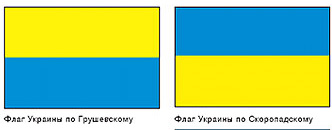

Now experts are breaking their spears in disputes over whether the flag was overturned or not, and if so, for what reason. It is believed that the adoption of this decision was influenced by the blue and yellow flag of the ZUNR, whose ideologues apparently formed state symbols according to the principle “if only not like the Poles,” in which the light (white) stripe is placed on the national flag at the top. Or maybe Pavel Skoropadsky, having thrown off the Central Rada, simply turned over the flag to symbolically mark the coup? Be that as it may, but at the peasant congress Skoropadsky presented an inverted flag and explained: blue is the sky, and yellow is the field of wheat. This idea still prevails today. They say that Ukrainians are a grain-growing nation, so the blue and yellow flag is its natural symbol.
But in the laws of heraldry - there is no such thing as wheat at all. Yellow is the color of gold, fire, the sun. And it cannot be from below. About the unnaturalness, the danger of combining blue over yellow, except for the book "I Ching" mentioned by the Chinese artist (by the way, there has never been a single case that the prophecies from this book did not come true), there is evidence of the interpretation of the meaning of colors and their combinations also from others hidden sources. For example, the ancient emblem of the creation of the world out of chaos and struggle, and the unity of two opposite principles in Eastern philosophy, known as "Yang-Yin", is conveyed with these colors. Yellow, or gold, Yang means "light, warmth, activity, masculine principle, sun." But blue Yin symbolizes darkness, cold, earth, sky (sphere), passivity, feminine element, month. What happens when the earthly and passive dominates (that is, is placed above) over the heavenly and active, perhaps, it is unnecessary to explain. It is well known from history what happened to those affairs, movements, countries that continued, arose, developed under the sign of such an unnatural combination of these colors. They seemed to be pre-programmed to fail.
Or take Feng Shui. According to this tradition, the placement of blue (will) over yellow (wisdom) means the "Law of Decline", i.e. progressive degradation, misfortune, chaos. While the reverse combination of colors - yellow over blue - means a harmonious combination of Heaven and Earth, male and female, strong and flexible, which promises development, prosperity, happiness.
From a sacred point of view, yellow denotes an active, creative, solar-fiery, spiritual-divine principle, and blue - passive, moist, conservative, which requires activation and spiritualization. The image on the flag of blue over yellow indicates that the nation recognizes the domination of the passive over the active, the conservative over the creative, the material over the divine. This worldview is contrary to the natural state of the universe and is destructive. Under such a flag, the state is programmed not for development, but for decline.
The Aryan tradition also proclaims this. Researchers claim that the spiritual leader of the majestic Aryan people Rama chose the yellow-blue standard as his sacred symbol. For it means a harmonious combination of heavenly fire (RA) and earthly matter (MA). It also demonstrates the natural superiority of spirit (gold, yellow) over matter (light blue, blue). Whereas the arrangement of paints is exactly the opposite, among other things, also distorts the holy name of Rama on Mara (a ghost, a ghost, or a zombie, in a modern way).
Ihor Kaganets, the ideologist of the Transition-IV concept and editor of the magazine of the same name, says that “the current blue and yellow state flag of Ukraine does not bode well for it, since it declares the perverse domination of passive matter over active spirit. Although, I must say, it exactly corresponds to the current temporary state of degradation and spiritual darkness in Ukraine ”. And it was precisely the adoption of a distorted symbol instead of the correct one that led to this state.
Actually, according to the Orthodox canons of icon painting, which are known even from Byzantium, gold, yellow symbolizes the Creator, God the Father, the halo of God the Son and, in general, the Highest Spirituality. Blue is everything earthly, as well as freedom of choice, which the Creator endowed his creations with in the hope that they will not abuse it. But we see how people use this gift. And we also know where the irresponsible freedom of the former commander of the heavenly host in the name of Dennitsa, better known as Lucifer, led the irresponsible freedom.
According to the rules of heraldry, flags are usually formed on the basis of the coats of arms that arose earlier than the banners. Therefore, the color of the upper strip of the panel dictates the color of the sign itself, and the lower one - of the coat of arms. If the coat of arms, for example, of Poland is a white eagle on a red background, then the flag is white and red, respectively. The coat of arms of Germany, which she inherited from the Holy Roman Empire of the German nation, is a black eagle on a gold background, hence the black stripe on the German flag at the top. Therefore, if the coat of arms of Ukraine is a yellow trident on a blue field (or even if you take the coat of arms of the Galicia-Volyn principality - a golden lion on blue background), then the flag must be unambiguously yellow-blue. " Zhovto-blakitny our prapori"- this is exactly what the famous song is talking about.
The current flag of Ukraine - blue-yellow because the top half is blue (main color), and the bottom half is yellow (auxiliary color). Accordingly, according to the laws of heraldry, on state emblem should depict a blue trident on a yellow background. However, in reality we have a yellow trident on a blue background. But then the main, yellow color should be at the top of our flag, and not vice versa.
World philosophical, political and sociological thought pays little attention to the issue of symbols. And it is not surprising, because modern mankind as a civilization of consumption is the so-called society of signs. And signs differ from symbols in the same way as, say, a letter - from the living sound that it stands for. The famous modern Serbian philosopher Svetislav Basara, who takes this issue quite seriously, believes that “a symbol is such a thing, without which reality is incomplete. These are a kind of exchange points through which the energy of the highest reality flows into the world of phenomena ... And the wrong interpretation of the symbol has, so to speak, a corrosive effect on reality. "
It would be interesting to consider the flags of other states in this vein and see, figuratively speaking, what reality they reflect. It is striking, for example, that in those states that have preserved traditional symbols on their banners, for example, the cross (as in Switzerland, the Scandinavian countries, in the UK), the realities are much better than where pentagrams and others were chosen for the role of national symbols infernal symbols. For example, now one of the first places in the world in terms of living standards is occupied by Norway, the national flag of which depicts a white and blue cross on a red background. Among the last countries on this indicator is Mozambique, whose symbols are crossed hoes and a Kalashnikov assault rifle against the background of a yellow pentagram.
You can say: this is because Norway is rich in minerals, and Mozambique is destroyed by social wars. But in reality, everything could be different: first, they chose the symbols (respectively, the cross and the Kalashnikov assault rifle), and only then, as a result, who got the flourishing, and who got the constant military conflicts.
You can also look at the flag of Holland, from which Peter I "borrowed" Russian flag, and on the flag of Russia. Holland has red at the top and blue at the bottom. In the middle is neutral white. That is, the Sun dominates over the Night. And on the Russian flag everything is upside down - white on top, and then blue is located directly above the sunny red. This is the same symbolism as in Ukraine. Symbolizes essentially the same thing. And the level of people's well-being also speaks of this - despite the innumerable natural resources of Russia, which are by no means owned by the Slavs-Aryans.

(It should be noted that White color, the color of silver, is characterized by complete freedom of opportunity and the removal of obstacles. Its fundamental quality is equality, it gives freedom. If white dominates, its negative characteristics come into force: isolation, sterility, disappointment, detachment. That is why great importance has a combination of colors and their dominants).
The flag of Yugoslavia was similar to the Russian one.

But Yugoslavia is no longer there ...
The direction of cultural and civilizational transformations is set by the spiritual and worldview impulse. Symbolism is a concentrated expression of the worldview. Therefore, the symbolism must correspond to the model of the future to which we aspire. The right symbology programs the right future.
Anatoly Gerasimchuk
Based on the materials of the article
Evgeniya Romanishina (sd.org.ua)
and other open sources
P.S. By the way, the flag of Ukraine as part of the USSR was red and blue - a large red stripe on top, and a narrow blue one on the bottom. And Ukraine was the most prosperous and successful republic in the USSR - I think no one will deny this fact. And for 23 years, Ukraine has managed not only to lose all its advantages, to drop in the ranking of the former republics of the USSR, probably to the last place, but also to embed itself in a fratricidal war on its territory ...
For example, the coat of arms of the city of Ilya Muromets - Murom is also red and blue.
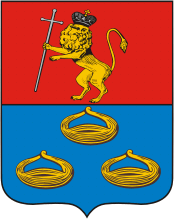
Probably, it is in this combination of colors - and not inverted - that the Slavs are strong. But if the blue color is on top, then we have what we have, as the wise Kravchuk used to say. For example, the so-called DPR and LPR:

Is there anything more than symbolic?
And the imperial Russian flag is also black on top of yellow.
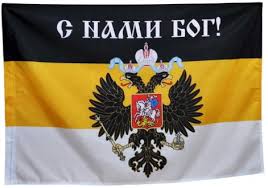
Oddly enough, black and yellow coloring (like blue and yellow in the ZUNR), appeared from Austrian empire Habsburgs. The family coat of arms of the Habsburg counts was initially a red lion on a gold shield. Count Rudolph I of Habsburg, who became Holy Roman Emperor of the German nation in 1273, combined the family coat of arms of the Habsburgs with the imperial two-headed black eagle on a golden shield. At the same time, the coat of arms of the Habsburgs (gold and red) were replaced by black and gold (black eagle on a gold field). This black eagle (like the black raven among the Vikings) has become the main symbol of Germany. And now - and Russia, which has accepted the accursed legacy of racist ideas.
(By the way, the placement of flowers on the flag of Germany clearly corresponds to the coat of arms of Germany: the black color of the main figure of the coat of arms - a black eagle - on top. In the middle - the red color of the red beak and claws of the eagle. Below - the gold color of the gold background on the coat of arms).
For the first time, the use of black, yellow and white colors on Russian banners was mentioned at the beginning of the 18th century - during the reign of Anna Ioannovna, later called "Bironovschina" after her favorite Ernst Biron. Now borrowed from the German and Austrian emperors, black and yellow colors have become the main symbol of the new imperial policy of the Russian Federation. And the so-called St. George's Ribbon is also from there, from Rudolf Habsburg. (The Habsburgs are one of the most powerful royal dynasties in Europe. Representatives of the dynasty are known as the rulers of Austria (from 1282), the Austro-Hungarian Empire (until 1918), as well as the emperors of the Holy Roman Empire, whose throne the Habsburgs occupied from 1438 to 1806 (with a short break in 1742-1745).
Of course, the arrangement of the flowers alone won't change anything. Colors simply symbolize this or that attitude of people to this or that worldview. What it is - this worldview - can be seen from human affairs ... Or just by looking at the flag ...
As you know, there are peoples who worship the symbols of the Night - the crescent moon, black or blue sacred flowers, for them the disappearance of the sun on the horizon means the beginning of a new day. New Year celebrated with them in the fall, when night triumphs over day. And there are peoples who since ancient times worshiped the Sun (yellow and red) - they are often called Aryan. All Indo-Aryan peoples worshiped the Sun. Their sacred colors are the colors of the Sun: red and yellow. Other peoples worshiped other gods. Their sacred colors are raven black and deep blue. Here, as they say, to each his own.
But what god is worshiped by Ukraine and Russia, which have red and yellow on their flags - under dark blue?
Oddly enough, the division of peoples into solar and night for some reason also takes place according to the same blood groups prevailing among certain peoples ... And by that, the Old (with the philosophy of death for death) or New (Good in response to Evil) Testament is a religion for these peoples ... So there is nothing accidental in the symbolism of this or that nation. Except, perhaps, only Russia and Ukraine ... Although, judging by the current behavior of Russia, which has chosen the philosophy of War, Evil and Lies, its symbolism corresponds to its behavior. And what about the symbols of Ukraine?
Flags of the USA, Switzerland, England, Japan:
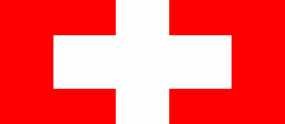
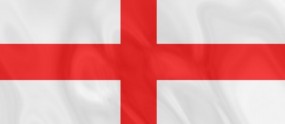
Flags of Finland and Estonia (Finno-Ugric group of peoples):
![]()
The combination of blue and yellow colors is one of the oldest modern national flags of all continents. V Kiev State it was used even before the adoption of Christianity.
What do these colors mean? Let's try to figure it out.
Blue has long symbolized clear, peaceful sky, a yellow- a symbol of labor and prosperity - this is the color of the grain field... However, there are other definitions as well. Yellow and blue colors are a combination of the main symbols of life - golden sun in blue space.
And also yellow and blue are Fire and Water, masculine and feminine.
This color combination was used and Cossacks... Since the 18th century. flags Troops of Zaporozhye more and more often they were made on a blue cloth, where stars, a cross, weapons or figures of saints were applied with yellow paint.
More and more these two colors are found in everyday life, in the clothes of the Cossacks, uses them and the church.
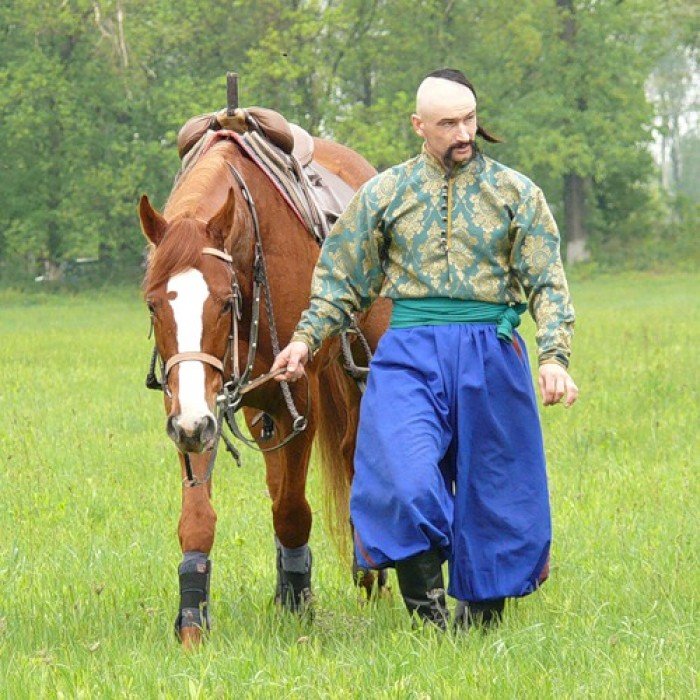
History of the Ukrainian flag
The history of the Ukrainian state flag is thorny and complex. Long wars, loss of autonomy and joining great empires forced to postpone thoughts about the state flag for some time, and today the senseless disputes of supporters of the collapse of the Ukrainian statehood about the incorrect placement of flowers on the flag still cause tension in society.
So many things have not been invented about the Ukrainian state flag: and that Skoropadsky "turned it over" at one time, and that the "traitor" Mazepa received it from the Swedes, and that the arrangement of flowers does not correspond to the rules of heraldry (the science of flags), and even what, Feng Shui, the location of blue over yellow means that water is flooding fire, and this symbolizes degradation.
To dispel the myths about the flag of Ukraine and dot the "i" let's find out more about the history of the Ukrainian state flag.
The oldest Ukrainian flags had a triangular-wedge shape. So in times Kievan Rus the most common was the red flag with a two-toothed trident. And later, in the XIV century, blue and yellow colors began to appear on Ukrainian flags: for example, in 1848 they were depicted on the flag of the Galicia-Volyn principality, as well as on the coats of arms of medieval cities, gentry, princes. Since the 17th century, the blue cloth increasingly became the background for the flag of the Zaporizhzhya Army, which depicted a knight in golden trousers with gold ornaments and fittings.
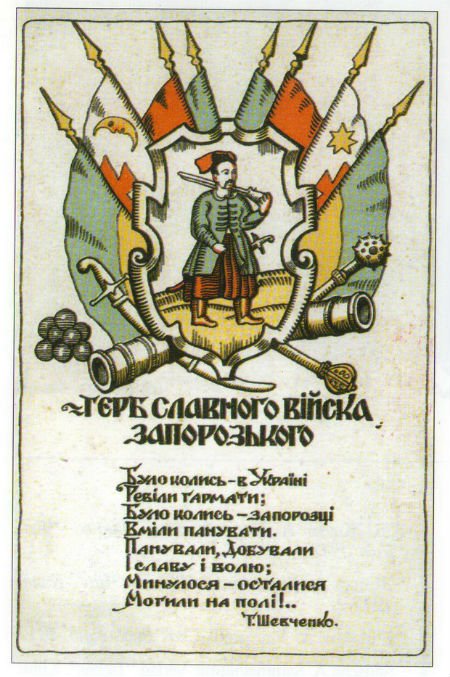
Postcard "Coat of arms of the glorious Zaporizhzhya Army", Petrograd, 1917
In 1917-1921, during the Ukrainian revolution, the blue and yellow cloth was the state flag of the Ukrainian People's Republic and the Ukrainian State, headed by Skoropadsky.
Despite all the inventions, allegedly Skoropadsky turned the Ukrainian flag, turning it from yellow-blue to blue-yellow, one thing is known: this statesman did not make any changes in the flag. Imagine what kind of resonance this would have caused in the press!
The researchers note that there were some false publications, allegedly on March 22, 1918, some kind of law on the yellow-blue flag was approved, but nothing is said in the minutes of the meeting or in the reports about this. In fact, then the version of the images of the coat of arms and the seal by V. Krichevsky was considered.
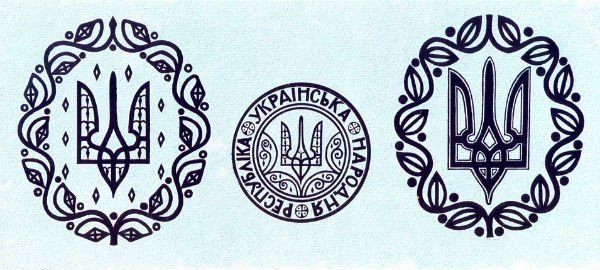
The first document that determined the arrangement of flowers on the Ukrainian flag was a legislative act from January 27, 1918... Then the Central Rada, headed by Grushevsky, approved UN interim fleet lawR which said:
« ... 2. The ensign of the Ukrainian Vyskovo floti є a panel about two - blakit and zhovtny colorah. In the ridge of a blakite color, there is a historic golden trident with an internal field in the new.
3. The ensign of the Ukrainian commercial flotilla. »
However, although the then Ukrainian flag was usually blue and yellow, in the press it was often arbitrarily called yellow and blue. We see the same on one of the postcards of that time.
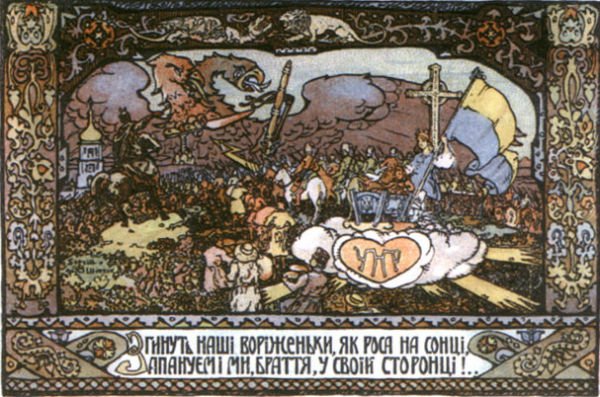
Card "Send our thieves", 1917, Kiev
In the Dnieper region, the location of the colors of the Ukrainian flag was determined by their visual-associative perception: blue symbolizes the sky, and yellow - a wheat field.

Poster, Kiev, 1917
While examining the arrangement of flowers on the Ukrainian flag, it was difficult for scientists to work with black and white photos and video documents. So in this photo of 1919, the blue color looks lighter than yellow, although, according to eyewitnesses of those events, the flags were blue and yellow.
![]()
Oath of members of the Directory, August 1919, Kamyanets-Podolsky
Analyzing historical events, we can confidently say that the blue and yellow flag of the twentieth century was a symbol of the Ukrainian nationalmovementagainstSoviet-communistOhoccupation.
And when the USSR collapsed, the Ukrainian belokor (a flag of two colors) began to be used as the state flag of independent Ukraine. Officially, the blue and yellow cloth became the flag of Ukraine on September 18, 1991, by the decision of the Presidium of the Supreme Soviet of Ukraine.
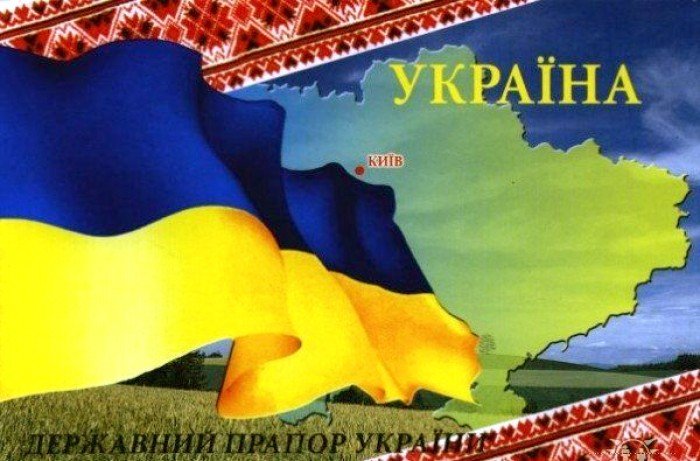
Lots of people and historical events stood on the way to the adoption of the Ukrainian flag as national symbol Ukraine. However, many years later, in 2004-m, justice will be restored, and the Ukrainians, after the difficult path of recognizing the independence of their country, will begin to celebrate the Day of the State Flag of Ukraine at the national level.
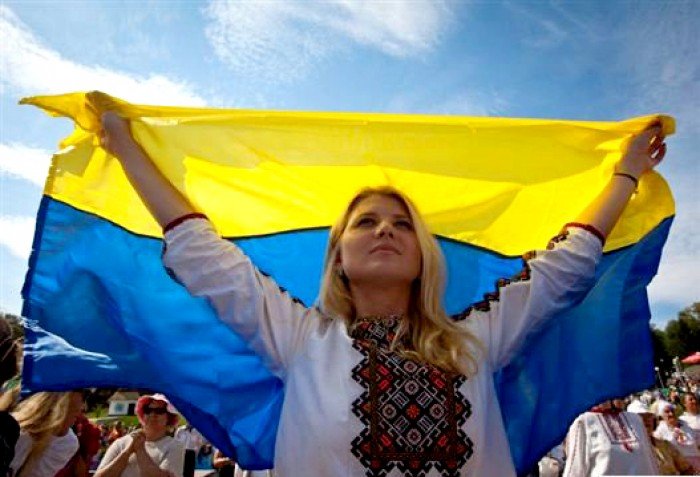
Friends! Remember that the flag is one of the official emblems of Ukraine, which symbolizes its sovereignty. Therefore, on the day of the state flag of Ukraine, do not forget to hang the blue and yellow flag on your home as a symbol of pride in your country.
The flag of the Ukrainian state is a blue and yellow cloth - a symbol of Ukraine's sovereignty. On August 24, 1991, on the day of the proclamation of the Act of Independence of Ukraine, it was raised above the house of the Verkhovna Rada. On January 28, 1992, the Verkhovna Rada of Ukraine adopted a resolution "On the approval of the national flag by the State Flag of Ukraine." It is defined by the current Constitution of Ukraine (adopted on June 28, 1996) as "a flag of two equal horizontal stripes of blue and yellow colors" (Article 20, section I).
The ratio of the width of the flag to its length is 2: 3. An official public holiday, Day State Flag Ukraine, which has been celebrated annually on 23 August since 2004. In 2008, for the first time, a solemn ceremony of raising the State Flag of Ukraine took place on the Independence Square. But not everyone knows that our flag, like the coat of arms, has a very old origin, and yellow and blue (light blue) colors accompany the entire history of the Ukrainian people from the earliest times.

The Ukrainian national tradition of symbolic reflection of the world was formed at the turn of many millennia. In the memory of the people, the combination of natural yellow and blue (blue) colors has been fixed since the time of worship of the sun and sky. These colors belonged to the spiritual components, reflecting the faith of our ancestors. Yes, in the "Veles Book" IX Art. we read: “Dazhbog on his own booze at the welz of the wisdom, yak blue.” We find a similar confirmation on the princely signs. land, principality, country) - Gate. After the adoption of Christianity, the symbolism of yellow-blue color was filled with new religious content. Yes, yellow color began to symbolize the sun, the Creator, God the son, divinity, the triumph of faith and is associated with the nimbus of Christ. Blue is considered the color of Christ. Blue symbolizes the sky, divine wisdom, infinity, blue is the color of the Queen of Heavenly Virgin Mary. Turning to our old chronicles, we see that the image of the Protection of the Most Holy Theotokos has become deeply revered in Russia-Ukraine since the time of Vladimir the Great. Kiev Tithe Church of the Most Holy Theotokos, displayed her symbol in his princely sign, bequeathed her image as an ober d for the state and future generations.
Christian symbolism of yellow-blue (blue) flowers is always present in old Ukrainian churches. This is clearly seen in the example of the Kiev Cathedral of St. Sophia - the Wisdom of God, which was built by Yaroslav the Wise at the beginning of the XI century. So, at the zenith of the central dome we see a monumental mosaic depiction of the half-figure of Christ the Almighty in a blue cloak. In the vault of the shining golden-yellow main altar is the majestic figure of "Mary Oranta" - the Mother of God who is praying. She is wearing a blue tunic. Other Sofia mosaic images of the Savior and the Mother of God, as well as the background of the ornament over the figures of the saints, stand out with such flowers. It is these colors that we find in the mosaic composition of Dmitry Solunsky from the Mikhailovsky Gold-Top Cathedral of the beginning of the XII century. They were used in more later times... For example, on the gates of the Vladimir Cathedral in Kiev, the figures of Saints Olga and Vladimir are depicted against a yellow-blue background. It should be added that yellow and blue (light blue) paints were also popular in the design of old books. Yes, they painted figures of saints, a portrait drawing of a princely family and images of birds in the Collection of Svyatoslav in 1073, which has survived to our time. They dominate in the decoration of the gospels, mitras, panagias, and other objects of religious worship, in precious jewelry made by ancient Ukrainian goldsmiths.
The chronicles did not give us information about what were the flags of the great princes of Kiev. There is only mention of military red banners and white banners, for example, in "The Lay of Igor's Regiment" (XII century). The oldest Ukrainian panels were triangular in shape. At the turn of the XIII-XIV century. quadrangular flags appear with wedge panels at the free end. The flags usually depicted crosses, heavenly bodies, coats of arms of princes. Historical sources testify that in 1410, in the Battle of Grunwald, the regiments of the Galicia-Volyn principality fought under banners, on the blue field of which a golden lion was depicted.
In the Cossack-hetman times, they used flags of different colors with images of gold crosses, stars, months, hetman or land coats of arms. On the banners that accompanied the Cossacks on their campaigns to the Crimea, Turkey, and Western Europe, they embroidered the image of the Holy Protection of the Virgin, whose cult was spread throughout Ukraine. Hetmans Ruzhinsky, Kosinsky, Nalivaiko, Lebeda, Sagaidachny had such flags ... During the liberation war (1648-1654), the Cossack banners of the Kiev and Chernigov regiments were distinguished by combinations of yellow and blue colors. Of the surviving books, in the drawings of which these colors prevail, we can name the Peresopnytsia Gospel of 1556-1561. - a national shrine where our presidents swear allegiance to the Ukrainian people.
The banners of the Cossacks were traditionally crimson, most often rectangular in shape. Yes, the large flag of the Zaporizhzhya Sich was red, on the obverse was a white image of the Archangel Michael, and on the reverse was a white Greek cross surrounded by a golden sun, a crescent and stars.
From the eighteenth century. regimental and centennial Cossack flags of the Zaporozhye Army are increasingly made of blue and yellow canvases. The most common image, known from the 16th century, is with a saber on the left side and a gun on the left shoulder, which the Cossacks took for the coat of arms of the Lower Army. Yellow and blue paints most often occurred in Cossack clothes and in the Haidamaks during the Koliivshchyna (1768).
The yellow-blue color combination prevailed in the coats of arms of the hetmans Mikhail Doroshenko, Ivan Bryukhovetsky, Kirill Rozumovsky, and many representatives of the Cossack foreman. The golden-blue compound is in the flag of Hetman Ivan Mazepa. And the banner of the last koshevoy of the Zaporozhye Sich, Peter Kalnishevsky, is an oblong rectangle of blue color with bright golden coats of arms. The traditional use of yellow-blue colors by the Cossacks on flags also confirms the conclusion of the outstanding Russian philologist, an expert on the sights of Ukrainian culture Fyodor Korsh regarding the painting by Ilya Repin "The Cossacks write a leaf to the Turkish Sultan", which was acquired by Emperor Alexander III: "... the Cossack banners depicted by the artist Repin in this picture, do not contain any foreign directions in their color set, but reflect in themselves the eternal continuity of the colors of gold and heavenly, constantly inherent in all insignia in Southern Russia (Little Russia) since the time of the Grand Dukes of Kiev, until the dissolution of the Zaporozhye freemen, according to the order of Empress Catherine the Great. There is plenty of competent evidence for this in domestic and foreign purely historical sources, as well as in a number of objects of material art of those ancient times. " To what has been said, we can add that in the pre-revolutionary interpretation of the Russian tricolor flag, the blue color was attributed just to Little Russia (Ukraine) and the Mother of God.
The long-standing historical traditions of using yellow, blue (blue) colors were even transferred to the coats of arms of the Ukrainian provinces of the Russian Empire, which were approved in the second half of the 19th century. So, out of 104 coats of arms of Ukrainian cities at that time, 86 found yellow, 51 - blue. Yes, the Kiev province had a blue-yellow shield with the image of the silver archangel Michael behind its symbol. Podolskaya - in the sky field the sun with sixteen golden rays.
After the revolution in Austria-Hungary (in March 1848), the national liberation movement spread to the Western Ukrainian lands. In May, 1848, the "Russian blue-yellow flag" was raised for the first time at the Lviv City Hall. In Lviv, the Main Russian Council was created, which decided to renew the coat of arms of the Galicia-Volyn state of the XIII, - XIV century. depicting a golden lion resting on a rock against a blue background, with "flowers - yellow and blue". At first, the order of the stripes for the flag was not regulated. In the press of that time, these flags were called "banners of Russian paint", which indicated their long-standing origin. Consequently, in the fields of Western Ukraine, blue-yellow flags have become more common. In the same 1848, at the Pan-Slavic Congress in Prague, a common Slavic blue-white-red flag was adopted, in which the blue stripe was the top. Perhaps the order of the stripes was influenced by the Austrian flag, in which black is the top, and yellow is the bottom. It is also worth noting that at the beginning of the twentieth century. in Galicia, the yellow-blue flag (that is, the yellow stripe at the top, and the blue one at the bottom) became the flag of the Western Ukrainian military-political formation of the Ukrainian Sich Riflemen, which strongly advocated the creation of an independent Ukrainian People's Republic. In 1914, the celebration of the 100th anniversary of Taras Shevchenko was saturated with yellow-blue flowers. Consequently, the yellow-blue color combination was recognized as national, the colors themselves were not in doubt, but both yellow-blue (light blue) and blue-yellow flags were used. During the First World War and the revolutionary events in 1917, the yellow-blue flags spread over almost the entire Ukrainian territory. They were also raised by some of the ships of the Black Sea Fleet.
On November 20, 1917, in Kiev, the Central Council proclaimed the Ukrainian People's Republic as its Universal. In January 1918, she approved the state symbols of the UPR: the coat of arms - the Sign of the Princely State of Vladimir the Great and the yellow-blue flag. The initiator of this choice was Mikhail Hrushevsky, Chairman of the Central Council, a well-known historian, well-informed with the traditions of Ukrainian national symbols. He substantiated the right of the UPR to the history of the Ukrainian people from the earliest times and the revival of the thousand-year-old Ukrainian state - "the only heir to Rus." According to the rules of heraldry and proprietary knowledge - the color of the coat of arms is transferred to the upper part, and the color of the coat of arms - to the lower, which corresponds to the historical name "yellow-blue". Under this flag, on January 28, 1918, the ardent defenders of the UPR - Heroes of Krut - went to eternity. After the coup d'état in April 1918, when Hetman Pavel Skoropadsky came to power, the yellow-blue flag was replaced by a blue-yellow one. During the Simon Petliura Directory, the flag became yellow-blue again, as in the times of the UPR.
On November 13, 1918, the blue-yellow flag was approved by the state for the West Ukrainian People's Republic, and on September 20, in the Carpathian Rus. On January 22, 1919, the national blue-yellow flag flew in Kiev on Sophia Square on the historic Day of the Unification of Ukrainian Lands. In 1939 he was admitted to the Carpathian Ukraine. The flag of the Ukrainian SSR (installed in March 1918) was red with the initials "Ukrainian SSR" and in 1949 it was replaced by a two-color one: the upper stripe was red with the image of a hammer and sickle and a pentagonal star, and the lower one was azure.
The OUN organization used a blue cloth with the special distinction of a trident - a sword in the middle. After a split in this organization in early 1940, this flag remained with the OUN-Melnikovites. OUN-Bandera in April 1941 took with their flag the red-black (blood-soaked land).
Under Soviet rule, the Ukrainian national flag and the very combination of yellow and blue (blue) were banned for many years. However, in the 1930s in Galicia, and after the Second World War among the Ukrainians in exile, where our flag lived, discussions arose between the supporters of the blue-yellow and yellow-blue order of color combination, therefore the Ukrainian National Council on June 27 in 1949 decided, that to the final establishment of state symbols by the independent government in Ukraine - the national flag is blue (blue) -yellow.
Mine National flag the people never forgot. With him, he gained his state independence in the struggle. In the spring of 1990, a blue and yellow flag flared over the city halls of Ternopil and Lviv, and on July 24, it was raised in the capital of Ukraine in front of the Kiev City Council. Historical justice was accomplished in the fateful one in 1991.
Since the tradition to call our flag "yellow-blue" has survived to our time, a certain discussion about the arrangement of flowers continues to this day. This phrase indicates that the first color is the top, and the second is the bottom. The first is the color of the coat of arms (main), the second is the color of the flag cloth (secondary). The location of the colored stripes is determined by the laws of heraldry or the idea that these colors carry. In heraldry, blue paint means loyalty, honesty, impeccability, and is also associated with the sky, air. Yellow (gold) personifies faith, power, strength, wealth, constancy, justice, good breeding, mercy, in addition, it symbolizes the sun. As of today, there is no officially approved explanation for the colors of our flag. The unofficial interpretation of the combination of colors of yellow and light blue (blue) in it is interpreted meaningfully and has often changed over time and historical circumstances. Yes, there are ancient ideological explanations of the colors of our flag as the golden Sun and the blue Sky, or the Sun and Water, Fire and Water, Will and Wisdom, and the like. From a sacred point of view, yellow marks the spiritual-divine principle, the Creator, and blue marks the matter created by him, the Universe. In the modern interpretation, the blue-yellow combination is a clear cloudless sky as a symbol of peace and a ripe wheat field as a symbol of prosperity. This explanation is understandable and acceptable to many. Also, blue (light blue) color is associated with the heavenly Canopy of the Most Holy Theotokos over Ukraine. It is important to understand that deep meaning, those values that are the basis of our primordial symbols - a kind of genetic code of the nation. In them we will find a concentration of faith, spirit, strength, a program for our advancement into the future.
- Weapon sounds cs go for 1
- Festival "times and eras"
- Festival of avant-garde music Fields and "Masters of Music"
- Vdnkh: description, history, excursions, exact address Moscow Butterfly House
- After the overhaul, the Kurakina Dacha park was opened with the excavated Kozlov stream
- Library of Foreign Literature named after
- Governing Senate - Constitutional Court of the Russian Federation

 Live Journal
Live Journal Facebook
Facebook Twitter
Twitter